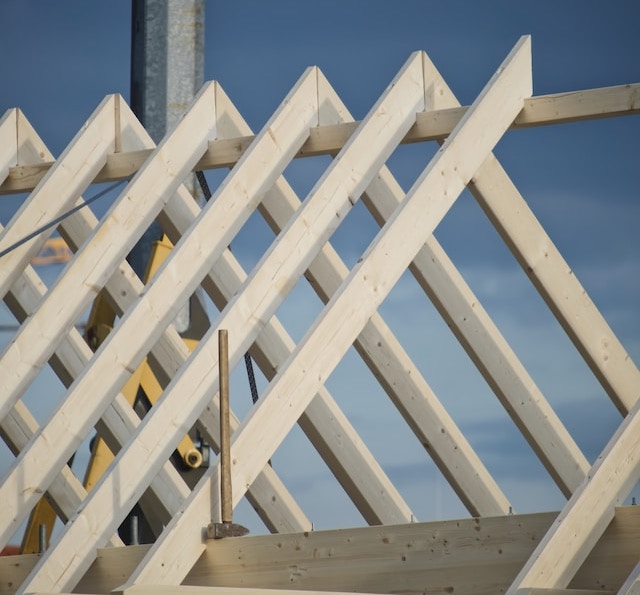Construction contraction slows but industry mood remains low

The UK construction sector saw a slight uptick in activity in September, but it remains firmly in contractionary territory.
The latest purchasing managers’ index (PMI) registered 46.2, an increase from August’s 45.5 but still close to the five-year low recorded in July.
The slower reduction in overall construction activity in September was helped by a weaker fall in residential building work (index at 46.8). Civil engineering (42.9) was the weakest-performing segment, although activity also decreased at a softer pace than in August. Commercial construction (46.4) was the only sub-sector to register a faster rate of decline in September.
A lack of new project starts was again the main factor holding back construction output. September data indicated that order books deteriorated for the ninth month in a row, albeit only marginally and at the slowest pace over this period.
Survey respondents often noted that subdued demand, elevated business uncertainty and general hesitancy among clients had made it difficult to convert sales opportunities. Some firms nonetheless commented on new business wins related to energy projects.
Mirroring the trend for new work, latest data indicated a reduction in employment numbers for the ninth consecutive month. Construction companies cited ongoing hiring freezes
and the non-replacement of departing staff in response to fewer workloads, although some reported a rise in the recruitment of apprentices.
Supply conditions improved again in September, albeit at only a modest pace. Shorter lead times for the delivery of purchased items was linked to reduced pressure on vendor
capacity. Reflecting this, construction firms recorded another solid decline in input buying in September, which extended the current period of contraction to ten months.
A strong increase in purchasing prices was recorded during September. Although faster than in August, the rate of cost inflation remained softer than seen on average in the first
half of 2025. Where rising input prices were reported, survey respondents noted the impact of elevated pay pressures, alongside increased energy, raw material and transport costs.
Business activity expectations for the year ahead meanwhile remained subdued, with confidence levels broadly unchanged since August and the second-lowest since December 2022. Some construction companies reported hopes of a boost from infrastructure spending, energy sector demand, lower interest rates and planning approvals (including the need for improvements to the Building Safety Act approvals system).
However, this was offset by concerns about the UK economic outlook, cutbacks to capital expenditure plans and reports of uncertainty among clients ahead of the Autumn Budget.
Tim Moore, economics director at S&P Global Market Intelligence, said: “September data suggested that the UK construction sector faced pressure on multiple fronts as residential, commercial and civil engineering work all continued to decrease at solid rates. Lower volumes of overall construction output have been recorded since January, although the latest reduction was the slowest for three months and the downturn in new orders was the softest so far in 2025.
“Business activity expectations for the year ahead were among the lowest since the end of 2022, suggesting that construction companies remained cautious about the near-term outlook and have yet to see a turning point on the horizon. Some firms hope for a boost from lower borrowing costs and noted new sales pipelines in areas such as energy security markets and infrastructure projects. However, many survey respondents reported caution among clients ahead of the Autumn Budget and a general reluctance to commit to major capital expenditure projects against a subdued domestic economic backdrop.
“Weak business optimism, shrinking workloads and robust cost pressures once again led to lower employment numbers across the construction sector. Lower staffing levels have now been recorded for nine months in a row, which is the longest period of job shedding since the pandemic.”
Sector remains ‘cautious’
Lynsay Turnbull, regional director at Thomas & Adamson, part of Egis Group, said: “September’s PMI data indicates that while the UK construction sector remains under pressure, it may be slowly edging towards a turning point, with output contracting at its slowest pace since June.
“While civil engineering continues to lag as the sector’s weakest performer, residential activity showed resilience, with the pace of decline easing. The recent announcement of the Housing (Scotland) Bill could inject some much-needed clarity into the residential market, unlocking stalled developments and stimulating demand.
“Business sentiment remained subdued since August’s 32-month low, as the sector continues to grapple with hiring freezes and a lack of new project starts, however, the upcoming Autumn Budget presents a critical opportunity for targeted infrastructure investment and planning reform, which could help to restore confidence and reignite growth across the industry.
“Encouragingly, a modest uptick in apprentice recruitment signals a long-term commitment to workforce renewal, even as overall employment continues to fall for the ninth consecutive month. Supply chains are showing signs of stabilisation, and while cost pressures persist, driven by energy, transport, and wage inflation, they are less acute than earlier in the year.
“The sector remains cautious, with firms citing client hesitancy and economic uncertainty, however, with the right policy and strategic investment, there is scope for a more positive trajectory as we approach the year-end.”
Matt Swannell, chief economic advisor to the EY ITEM Club, said: “The slight recovery in the PMI over the last two months has done little to erase July’s fall to a five-year low. All three construction sub-sectors – residential, commercial, and civil engineering – continued to show a fall in activity as the pipeline of new work narrowed and order books declined for the ninth consecutive month.”
However, he suggests the weak PMI figures should be taken with a pinch of salt.
Mr Swannell added: “So far this year, the construction PMI has provided an unreliable indication of activity in the sector. Official estimates have reported output growth, but the construction PMI has slumped.
“Therefore, the weakness in the PMI should be taken with a heavy pinch of salt as it probably reflects downbeat business sentiment rather than a true shift in activity.
“Continued speculation around Autumn Budget tax rises will have weighed on the construction sector’s mood, compounded by signals from the Bank of England that it is unlikely to cut interest rates again this year.”
Mr Swannell concluded: “The outlook for the construction sector is mixed. Rising government investment and reforms to increase housebuilding will provide demand with some support.
“However, ongoing uncertainty around the prospect of further tax rises and policy reforms could cause some private sector projects to be delayed while businesses continue to grapple with high labour costs.”
Brian Smith, head of cost management at AECOM, said: “The index is edging towards the key 50.0 mark, a sign that conditions may be starting to steady. But activity is still falling, and with inflationary pressures biting, contractors will need to see some shifts in the market to lift new orders as we head into the winter months.
“It’s essential that the recovery in housebuilding materialises sooner rather than later and that the commercial sector continues its solid performance, as Grade-A space remains in short supply.
“However, ongoing inflationary pressures are still hitting the sector, driving up costs and holding back growth. The frustration for firms is that these pressures are beyond their control. All contractors can do is position themselves in the best way possible by moving quickly and diligently to secure the new work that is available and optimise their capacity so they’re ready to seize on the pipeline of new work promised by the government.”










